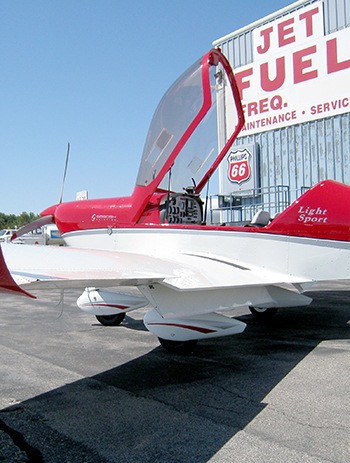Subscriber question:
"I learned on Cessna 152s and was always taught to extend the flaps one notch at a time. I'm checking out on a less common airplane that has old-style split flaps. The instructor said I can just turn final and, once I have the runway made, extend the flaps as much as I want for the landing. Even zero to full at once. Is this really OK?" — Daryl L.
Wally:
 “Well, I can give you a definite it depends on the airplane answer to that question.
“Well, I can give you a definite it depends on the airplane answer to that question.
In many airplanes, going from zero flaps to full flaps creates a big change in pitch, power, and trim requirements—something most of us would rather take a step at a time. In aircraft with smaller and mostly drag flaps, the changes are not as dramatic and can be handled easily.
For example in a Cessna 170A, going from full-up to full-down you go through 4 or 5 flap settings, but the flaps are so small and ineffective you feel almost no change as you extend them. It seems hardly worth the trouble and you surely don’t get much drag or reduction in stall speed. Apparently, Cessna 170A owners complained to Cessna because when they built the 170B they gave the pilot 40 degrees of high lift and high drag Fowler flaps. If you pull those out all at once it would be like hitting a brick wall.
If you are riding on an airliner, you will notice that as you approach the airport area, the first notch or two of flaps is usually just leading edge devices and a little bit of aft flap extension. That is just enough to lower the stall speed so they can safely operate in the 180- to 200-knot range without adding a lot of drag. These are the typical speeds assigned by ATC for sequencing. They try to use the minimum flap needed for the circumstances both to reduce noise and fuel consumption.
Of course, they all have a point at which they must be at landing flaps and stabilized. This is usually at least 1000 feet above ground.
So, it’s your choice: a little at a time or all at once. It just depends on the airplane.”
For the airplane(s) you fly, do you usually extend flaps incrementally?
